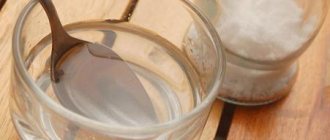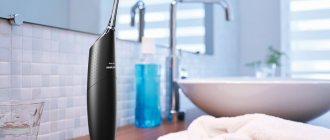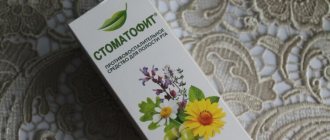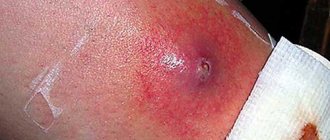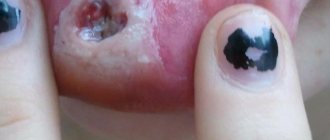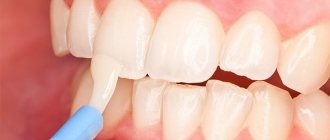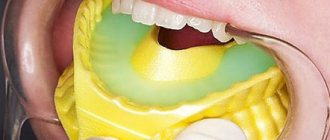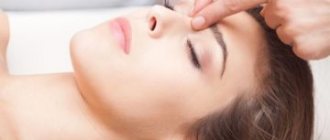The essence of the method
Nasal rinsing came to us from India. They used a teapot with a narrow spout, pouring the solution into one nostril and releasing it out of the other. The basis is the cleansing of the maxillary sinuses from dust, pathogens and purulent secretion in the case of inflammatory processes.
These days there are three ways to rinse your nose:
- Using a teapot with a narrow spout. The downside is that not everyone has such a device at hand in their home.
- Using a specialized washing kit or Dolphin. People suffering from chronic sinusitis have such a set.
- Using a wide container, such as a plate. Close one nostril with your finger and inhale the solution with the other. Then tilt your head towards the pinched nostril - the liquid will come out on its own. Doesn't require any cost, just skill.
It makes no difference which tool you use to clear your sinuses. Specialized kits are good because they come with 20-30 bags of ready-made solution, but these kits are not cheap. The washing device is a plastic bottle (Fig. 1).
Figure 1 - Sample of a nasal rinsing device.
Cost from 350₽ and above. For “Aqua Marisa” the starting price is 439 RUR. You can also buy a bottle on Ali Express for 200-250 rubles (Fig. 2).
Figure 2 - Sample bottle for washing with Ali Express.
How to rinse your nose
It is difficult for an untrained person to master the technique of rinsing the nose the first time. The procedure may seem unpleasant. Practice it often to be confident in your actions.
The preparation process includes heating the water and diluting the solution. Water that is too hot or cold will not work. Cold will cause a cold, and hot will burn the mucous membrane. Prepare warm water. You can heat the water in the microwave or wait until the boiled water cools down.
There are three types of nasal rinsing technique:
- Inhalation of water through the nasal cavity;
- Pressing the bottle;
- Spray spray.
According to research results, the first two methods demonstrate the greatest effectiveness. This is because the spray did not cover the entire sinus area, whereas pressure-based methods did a better job.
When using the bottle, follow the instructions in Fig. 3:
Figure 3 - Technique and procedure for rinsing the nose with a bottle.
If you choose the inhalation method, follow the step-by-step guide:
- Bend over to the container with the solution;
- Close your right nostril tightly, tilting your head slightly to the left;
- Inhale the solution through your left nostril and immediately turn your head to the right so that it comes out of the opposite cavity;
- Help the solution leave your sinuses completely by exhaling from your right nostril. You can hold down the left one for a better effect;
- Repeat rinsing until all secretion is released. If the purpose of rinsing is different, then do 4-5 approaches for both cavities.
There will be no difficulties with the spray. Spray the solution 2 times into each nostril, blow your nose when the mucus begins to flow.
Watch the video where Elena Malysheva in the “Live Healthy” program explains how to properly perform the nasal rinsing procedure.
Solutions
With soda and salt
- Prepare half a liter of boiled warm water;
- add half a teaspoon;
- add 1 teaspoon of non-iodized salt to the solution. Do not use table salt as it contains foreign additives;
- add half a teaspoon of 2% baking soda.
- stir thoroughly until completely dissolved.
Use the prepared mixture twice a day for 3-5 days.
With soda and iodine
- Take 0.5 liters of boiled warm water;
- add 1 teaspoon each of non-iodized salt (sea salt is also helpful), baking soda and 10 drops of iodine.
The mixture with iodine cannot be used for more than 3 days. Rinse 1-2 times a day.
With soda and peroxide
- Pour warm water 36-37 degrees into a 250 ml glass. You can take a glass of 0.5 liters. and pour half;
- add a quarter teaspoon of soda;
Rinse your nose with the resulting solution. After 20 minutes, blow your nose and rinse with a separate solution of peroxide. To do this, pour a quarter glass (0.5 l) of water, add 10 drops of hydrogen peroxide.
Course 3-5 days morning and evening.
The video provides a recipe with step-by-step instructions for rinsing your nose with boiled water, baking soda and hydrogen peroxide.
Rinsing the nose with soda-saline solution for sinusitis
In order to rinse your nose with salt and soda for sinusitis, it is necessary to make some adjustments to the solution.
There are three methods.
- Treatment of sinusitis by rinsing the nose with a solution of salt and propolis: dissolve 1 tsp in one glass of warm water at room temperature. salt and add 15 drops of propolis tincture. This composition should be used to rinse the nasal membrane 3-4 times during the day.
- Salt solution with iodine or potassium permanganate. Dissolve 1 tsp in one glass of water at room temperature. salt and add 2 drops of iodine to it. Rinse the nasal cavity with this solution 3-4 times during the day. In just a week, by rinsing the nasal membrane with this solution, you can forever forget about such a disease as sinusitis.
- Soda-salt solution. In one glass of water at room temperature you need to dissolve 0.5 tsp. soda and so much salt. Rinse your nose 3-5 times throughout the day. By rinsing your nose with this solution, you can reduce swelling of the nasal mucosa.
Alternative Methods
In Indian culture, cleansing practices are important along with asana and meditation. Hindus use a special Neti teapot to rinse their nose. The procedure is called “Jala Neti”. It helps eliminate allergies and runny nose. This is an excellent prevention of colds.
The nose does the job of filtering, but in big cities the air is so polluted that the nasal cavities become clogged with dirt. Rinsing helps remove accumulated dirt. The side effect is to relieve tension from the facial muscles and eliminate tension.
Use boiled water at a temperature of 36.6 degrees. The water should be salty, but comfortable for the mucous membranes. The dosage of salt is individual depending on sensitivity. If you feel a burning sensation in the bridge of your nose or in your nostrils, prepare the water again.
After completing your preparation, move on to practice:
- Blow your nose, clearing the way;
- Lean over the bathtub or sink and begin breathing through your mouth.
- Turn to the side so that one nostril is higher than the other;
- Gently insert the teapot spout into your upper nostril and begin pouring liquid out of it.
- The solution will flow out of the second nostril. During this time, it is important to breathe through your mouth.
- Repeat the steps with the second nostril, then let all the water come out by blowing your nose a little.
If, with the correct technique, water does not pass or flows backwards, postpone the procedure: the passages are completely blocked. Also, you cannot continue the procedure if bleeding has opened.
Nasal rinsing for sinusitis: rules of procedure
There are several types of solutions that can be used to carry out this procedure. But no matter what solution is chosen as the main one, you need to know the rules for rinsing the nose for sinusitis.
Features and rules for rinsing the nose for sinusitis:
- Before starting the procedure, it is necessary to clear the nasal passages as much as possible of accumulated mucus. This can be done by simply blowing your nose, and if such actions do not produce results, then you need to use vasoconstrictor drops in the nose. Literally 3-5 minutes after cleansing the nasal passages, you can begin rinsing.
- To carry out the procedure in question at home, you can use a special jala-neti teapot, a syringe or a regular syringe. The choice of device for rinsing the nose as part of the treatment of sinusitis does not affect the effectiveness of the procedure.
- The sick person should bend over a sink (or a wide and shallow basin), the head tilted to the side - in this position, one nostril is located higher than the other. It is into this “upper” nostril that the solution from the selected device is poured.
Please note: if all stages of rinsing the nose for sinusitis were performed correctly, then the solution should not be poured out through the mouth - it flows out of the “lower” nostril. . For one procedure, it is enough to use 200 ml of solution. Since there are quite a few types of solutions for rinsing the nose for sinusitis, they can be alternated, even within one day. During the day, the patient must undergo a minimum of 2 and a maximum of 4 similar procedures, and the total duration of nasal rinsing for sinusitis is a maximum of 15 days. The temperature of the solution used for the procedure should not be too high or low - the best option is 40 degrees. Many components included in solutions for rinsing the nose for sinusitis can cause an allergic reaction.
Before carrying out the procedure, you must ensure that there is no hypersensitivity or individual intolerance to substances.
- For one procedure, it is enough to use 200 ml of solution.
- Since there are quite a few types of solutions for rinsing the nose for sinusitis, they can be alternated, even within one day.
- During the day, the patient must carry out a minimum of 2 and a maximum of 4 similar procedures, and the total duration of nasal rinsing for sinusitis is a maximum of 15 days.
- The temperature of the solution used for the procedure should not be too high or low - the best option is 40 degrees.
- Many components included in nasal rinsing solutions for sinusitis can cause an allergic reaction. Before carrying out the procedure, you must ensure that there is no hypersensitivity or individual intolerance to substances.
Washing in children
For young children, it is recommended to rinse their nose with saline solution. Use a bulb or dropper to drop the solution into your nose.
Recipe for rinsing:
- Take a clean 1 liter container;
- Pour 1 liter of boiled water into it with a temperature of 36.6 degrees;
- Add 1 teaspoon non-iodized salt or sea salt.
The mixture is ready. Stir the salt with a clean spoon to distribute it evenly. Pipette the resulting mixture, then drop 2 drops into the child’s nostril. The child should lie upright. Wait 10-15 minutes for the salt to take effect. Blow away any mucus. Repeat from the second nostril.
Using a pear requires more skill and accuracy. First, practice pinching an object to feel the force of compression. Then wash the device thoroughly in hot water and soap and rinse several times.
Before the procedure, drop chamomile into your nose. You can simply use boiled water. The baby should lie on his back. Then squeeze the bulb so that all the air comes out. Gently place the tip of the bulb into the child's nose and begin to unclench it. The pear will “pull out” all the mucus that has collected in the baby’s nasal cavities.
Do not use rinsing procedures more than 3 times a day.
How to prepare a two percent soda solution
If it is a medicinal or cosmetic product, in most cases you will need less than a glass of water and a small handful of bicarbonate. Proportions: 98 ml of water requires 2 g of soda.
In everyday life it is difficult to measure exactly this amount of ingredients. Therefore, you can make it simpler: knowing that 7 g of bicarbonate fits in a teaspoon, mix this amount with water. How to prepare a 2 percent soda solution in this case? The correct ratio is one teaspoon of bicarbonate per whole, plus another two-thirds glass of water. The calculation is not perfect, but in everyday life this method is suitable.
To avoid making calculations, use the table below.
Washing in pregnant women
During pregnancy, rinsing can be a salvation for types of sinusitis. This is due to the ban on taking antibiotics, as they can disrupt the development of the fetus: the formation of bone tissue.
Pregnant women can use a solution of sea salt and soda, the recipe for which is given above, and a mixture of soda and iodine. The antimicrobial effect will help eliminate bacterial infection.
Use herbal infusions for rinsing: chamomile, calendula officinalis flowers. Course 5 days 3-4 times a day.
- To prepare chamomile infusion, place 2 tablespoons in a glass of boiling water;
- Cover with a lid or brew the mixture in a thermos;
- Leave for 30 minutes, then squeeze out.
For a solution with calendula flowers, add sage, clover flowers, calendula, and chamomile in equal amounts per liter of water. Buy herbs in filter bags at the pharmacy for easy brewing. The course is no more than 4-5 days, 2-3 times a day.
- Place 4 bags in a thermos or container with a lid;
- Leave for 2 hours;
- Rinse with warm infusion.
Do not use oak bark infusion for rinsing. It will disrupt the sense of smell and irritate the mucous membranes.
Indications for use
Soda drip is indicated in certain cases; healthy people should not do it. Treatment methods are used for both adult patients and children.
An IV is prescribed for coma caused by diabetes of any type. The product is indicated for intoxication of the body, diarrhea and vomiting to restore water-salt balance.
For metabolic acidosis, NaHCO3 is used when the alkaline index drops below 7.2.
Expert opinion
Did you know?
Patients with deep burns and significant damage to the epithelium are given droppers with soda. The substance is used to replenish lost fluid, as well as to prevent shock.
In addition, sodium bicarbonate is used as a treatment for kidney and liver pathologies, for hypoxia in newborns, and for the prevention of air and sea sickness. Soda reduces the likelihood of blood clots and improves blood flow, so it is prescribed for high blood viscosity.
We suggest that you familiarize yourself with the pain in the jaw near the ear, the main causes of the symptom.
Soda injections are used to treat cancer. The solution is injected through a tube into the area where the tumor is located. The patient also needs to take a 20% solution orally every day.
The product really helps in the treatment of oncology if you use the Simoncini method. An oncologist from Italy claims that neoplasms and metastases contain Candida fungi, and they need to be fought with soda.
NaHCO3 helps slow down the growth of fungi and their reproduction, which improves the patient's condition. Simoncini's method is not official, but judging by patient reviews, it helps.
In addition to its beneficial medicinal properties, baking soda can also cause adverse side effects in some people, especially if taken incorrectly.
- Acid rebound is a sharp increase in acidity in the stomach when soda is stopped, which occurs due to the release of CO2 during contact of soda with hydrochloric acid, and carbon dioxide, in turn, irritating the gastric mucosa contributes to increased gastrin production. This usually happens if the intake of soda does not proceed incrementally - from a lower dose to its increase, or when taken in an unextinguished state.
- Increased blood pressure;
- Swelling throughout the body;
- Alkalosis.
- Individual intolerance, hypersensitivity to sodium bicarbonate;
- Calcium deficiency in the body (hypocalcemia);
- Chlorine deficiency in the body (hypochloremia);
- A large amount of table salt in the daily diet, because... Baking soda also contains sodium, an increase in the level of which contributes to an increase in blood pressure and swelling;
- Binge eating;
- Cancer stages 3 and 4;
- Diabetes;
- Pregnancy;
- Stomach ulcer (according to Dr. Neumyvakin).
How to drink soda?
With water. Pour boiling water over a spoonful of baking soda in the required dosage, stir well until the “quenching” reaction is completed, then add a little cold water to keep the solution warm, or cool it.
Soda and milk. Milk not only “quenches” sodium bicarbonate, but also makes the product soft, which is especially useful for irritation of mucous membranes. Taken 30 minutes before meals or 2 hours after meals. Some traditional healers generally believe that it is best to drink only soda-milk solution. The course of treatment is up to 2 weeks, after which a 14-day break is taken and the course is repeated.
How to drink soda according to Neumyvakin. Dilute ½ teaspoon of baking soda in half a glass of boiling water or hot milk, after extinguishing, add cold water to the glass. At a young age, it is recommended to drink 2 glasses of solution per day, at an old age - 3 glasses. After the first 3 days of use, a 3-day break is taken and the dosage is increased to 1 hour.
Reviews from doctors
Read reviews about the nasal rinsing procedure as a prevention and treatment:
This method is the most important tool for combating sinonasal diseases. With the help of repeated studies, it was possible to prove that patients feel better and symptoms of the disease disappear. Use rinsing as a primary and additional method of combating the disease.
